Rajo Laurel, Marian Pastor Roces, and Marlon Rivera at Vogue Talks. Photo by Ed Simon
This April, Vogue Talks returns with Marian Pastor Roces, Marlon Rivera, and Rajo Laurel discuss the intricacies of Filipino culture, identity, and design.
At the second Vogue Talks of the year, design, culture, and identity are re-examined in a discussion entitled “The Filipino: Exploring Deep Roots in Design.” In an hour and a half, Marian Pastor Roces and Marlon Rivera unpacked the complexities of Filipino branding and design in a talk moderated by Rajo Laurel.
When people hear the word “Filipino design,” the things that first come to mind are the well-known Filipino symbols: jeepneys, pearls, sinigang, and even karaoke machines. For Miss Universe 2022, R’bonney Gabriel, the first thing she thinks of is the terno, as it is the first Filipino design that she drew inspiration from as a designer. “Filipino design has a lot of tradition that stays true itself, even today,” she says, expressing her love for Philippine fashion.

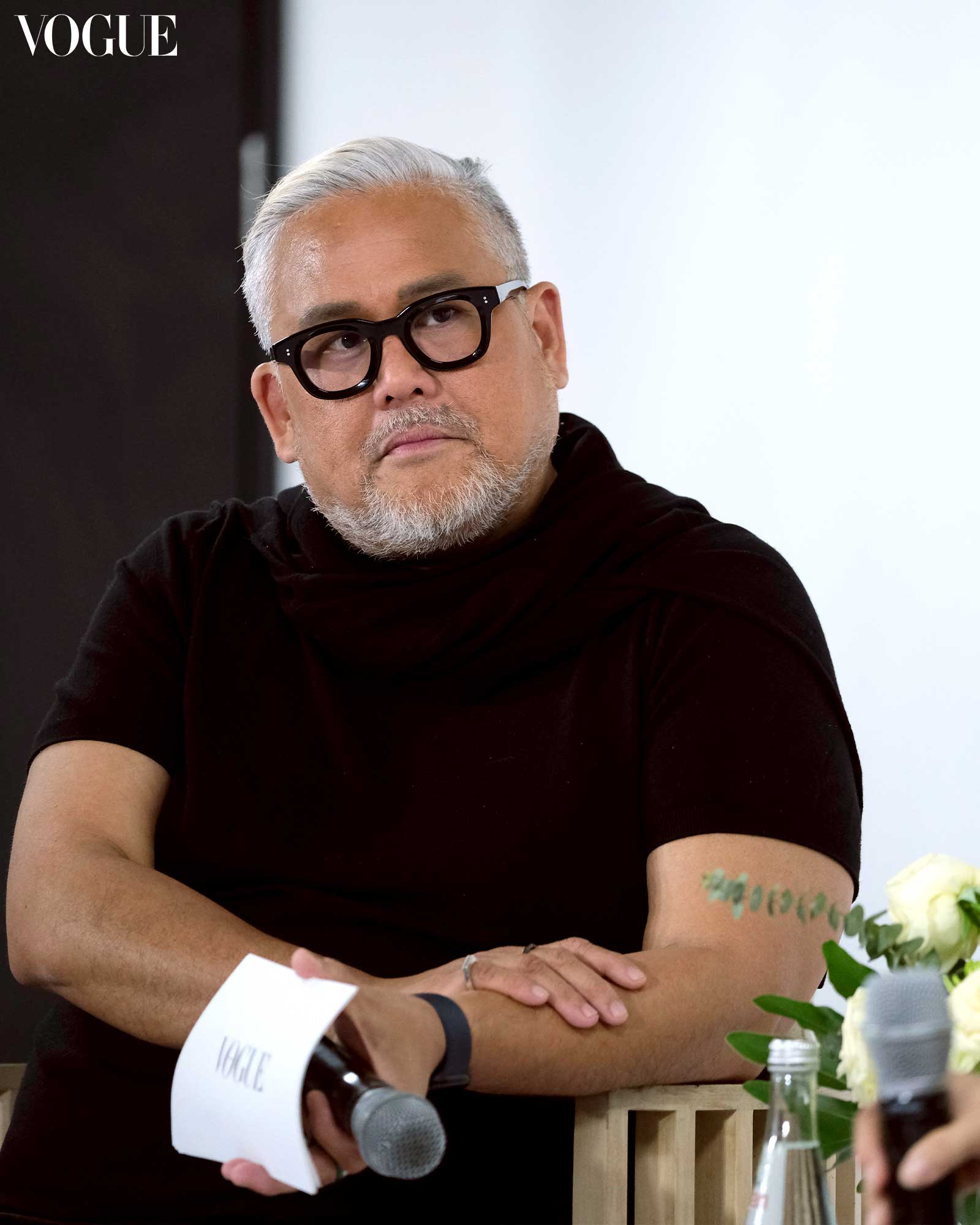
As guests settled down after fueling themselves with Pocofino coffee and hors d’eouvres from Goodness Graze, Rajo posed the first question of the afternoon’s discussion: What makes a design inherently “Filipino”?


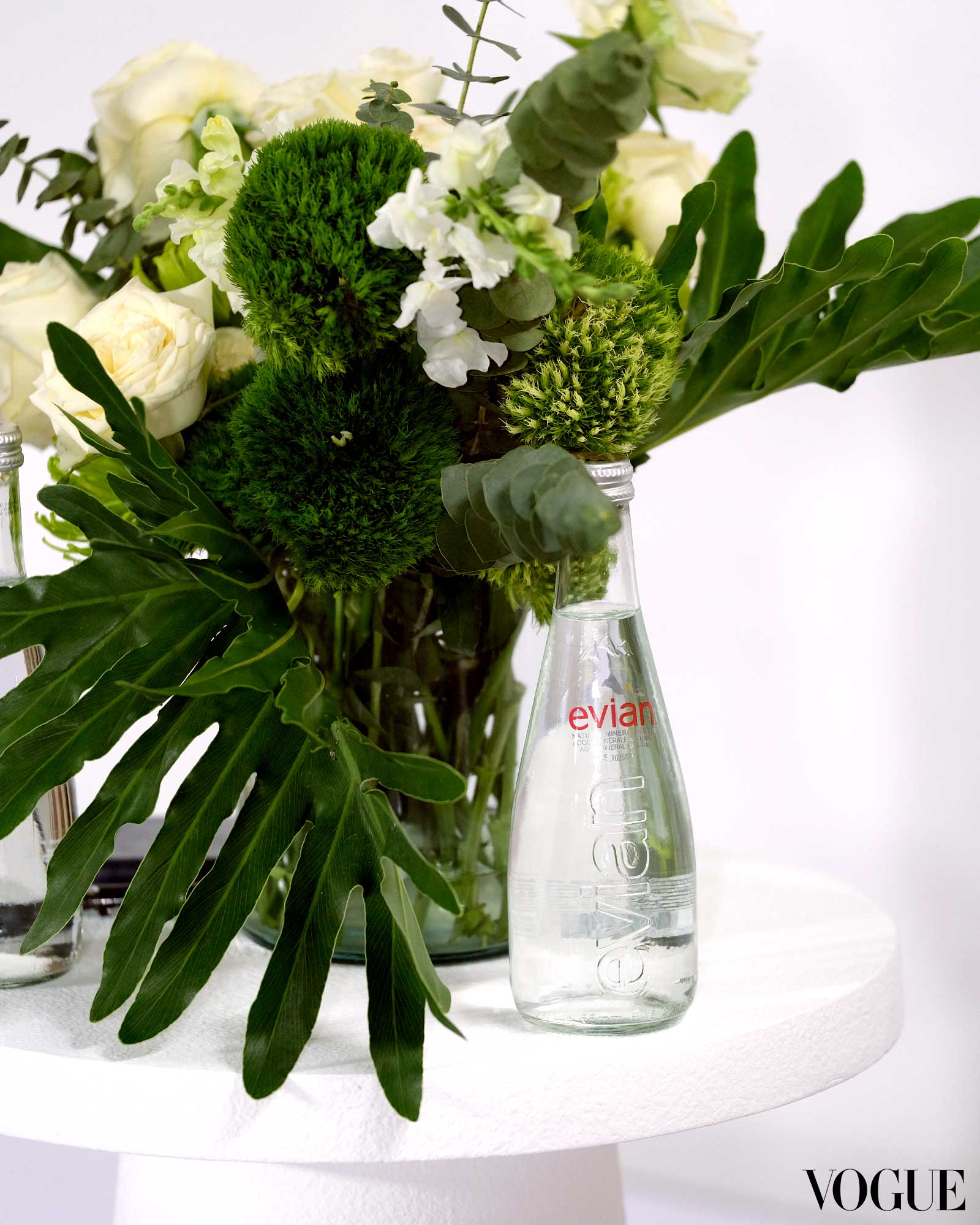
Rethinking what “Filipino” is
With fresh hair and makeup by Nix Institute of Beauty, the three dived into the discussion. According to Marian, the word “Filipino”, which until 1898 meant a Spanish person born in the Philippines, to be a relatively new idea. “Filipino is a work-in-progress. We are inventing it multi-generationally, drawing on things that we seem to feel or do naturally,” she tells Vogue Philippines.
In the design context, Marlon’s thoughts are along the same vein as Marian’s, summing it up in one word: social. “Social ha, not sosyal [fancy],” he tells Vogue Philippines. “It’s very contextual, very contingent to what we need now and what we have now.” During the talk, Marlon uses sari-sari stores as an example, emphasizing their bespokeness in terms of offering items that their community needs. For both Marian and Marlon, this attention to the micro-scale is palpable everywhere in the Philippines, from deep time to today. “This is one country where you can buy one stick of cigarette. This is the country where you can buy a little bit of vinegar and a little bit of oil,” Marian says, referring to the Philippines’ tiny retail order of things.
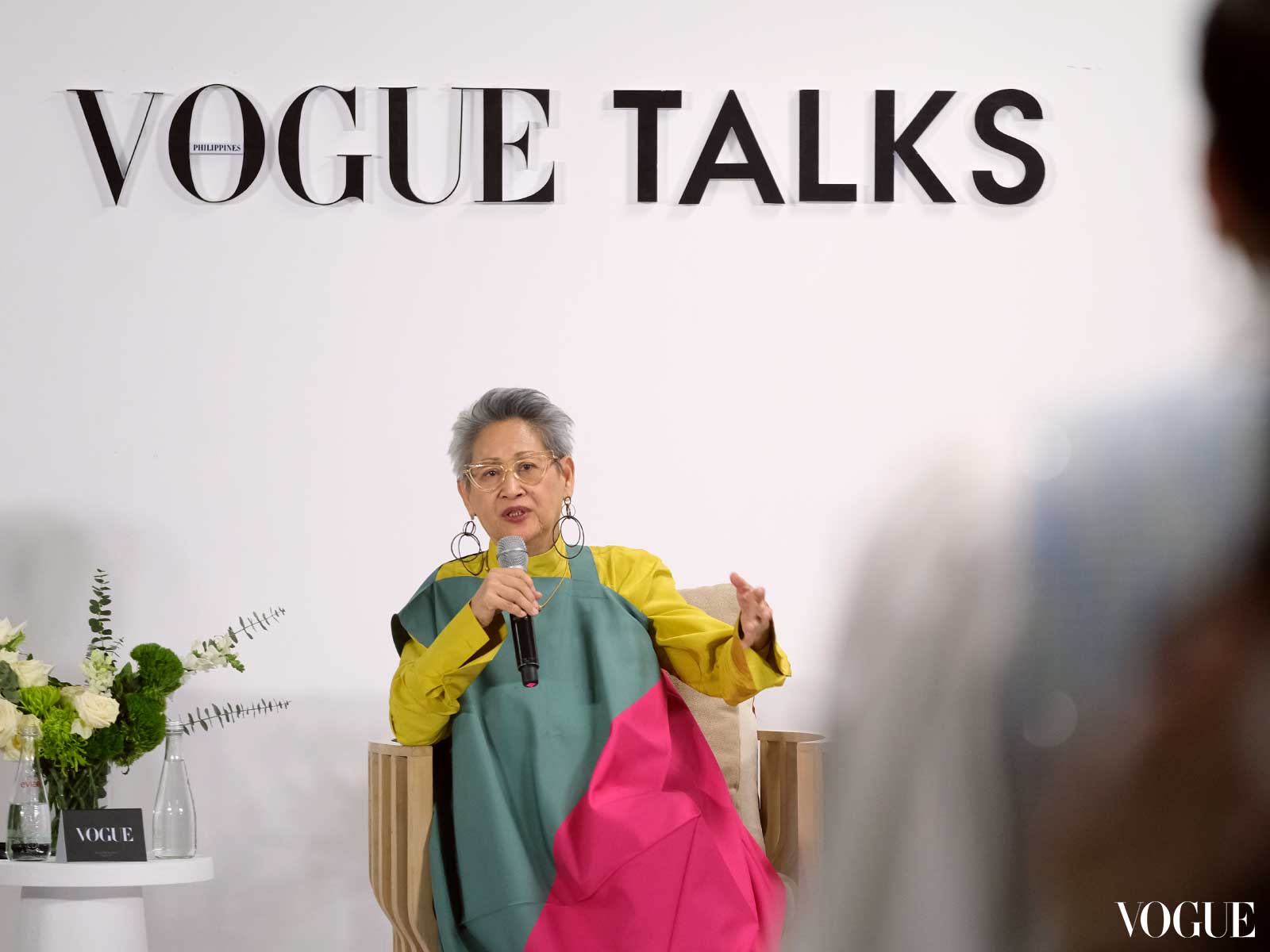
With much of Filipino design driven by social needs and available resources, Marlon highlights the importance of re-contextualizing global ideas for Filipinos. “Every work has to fit squarely within the context that it’s found,” he says. He takes the country’s sachet economy as an example: It’s really about what we can afford now,” he says. “It’s a sad reality, right? But it’s what you can afford today. That’s the cash outlay, and the sachets make it possible.”
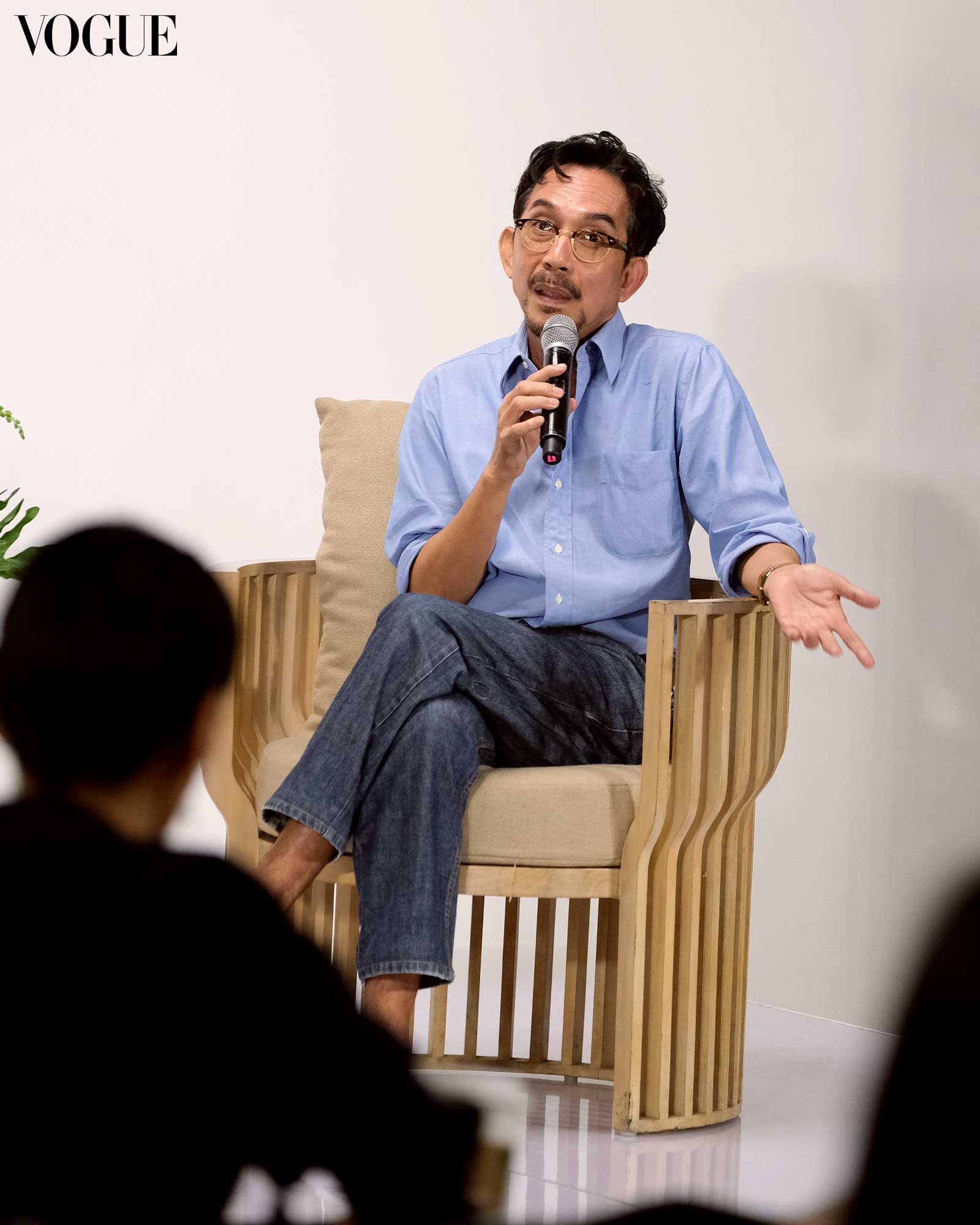
And yet, despite these sad realities, both Marion and Marlon feel that there is nothing to be ashamed of in such Filipino cultures. Marian describes them as the “monumentality of the small” and thinks this character to be definitive of beauty. “I’d like you all to think about all the incredibly beautiful traditional Philippine textiles, or beautiful writing on bamboo… The scale of execution is minute,” she says. She shares that out of the thousands of exquisite material she has encountered in the last half century of her curatorial work, she finds the massive compositions of tiny, tiny elements—from sari-sari stores to archaeological gold jewelry—to be deeply moving.
A newfound perspective
After the discussion, Marian, Marlon, and Rajo received flower bouquets from Laso Creations by Khai. With minds refreshed from the talk and from sipping on Evian water, attendees shared their thoughts with each other. Patrick De Veyra, a visual artist and curator, shares his appreciation for how Marian “brought a redeemed sense of who we are.” “I think there has been so much ridicule when it comes to our culture, even from among our intellectuals,” he says. “I think it’s important for our generation to have an understanding of the qualities that make Philippine history, culture, and Philippine-made objects.”
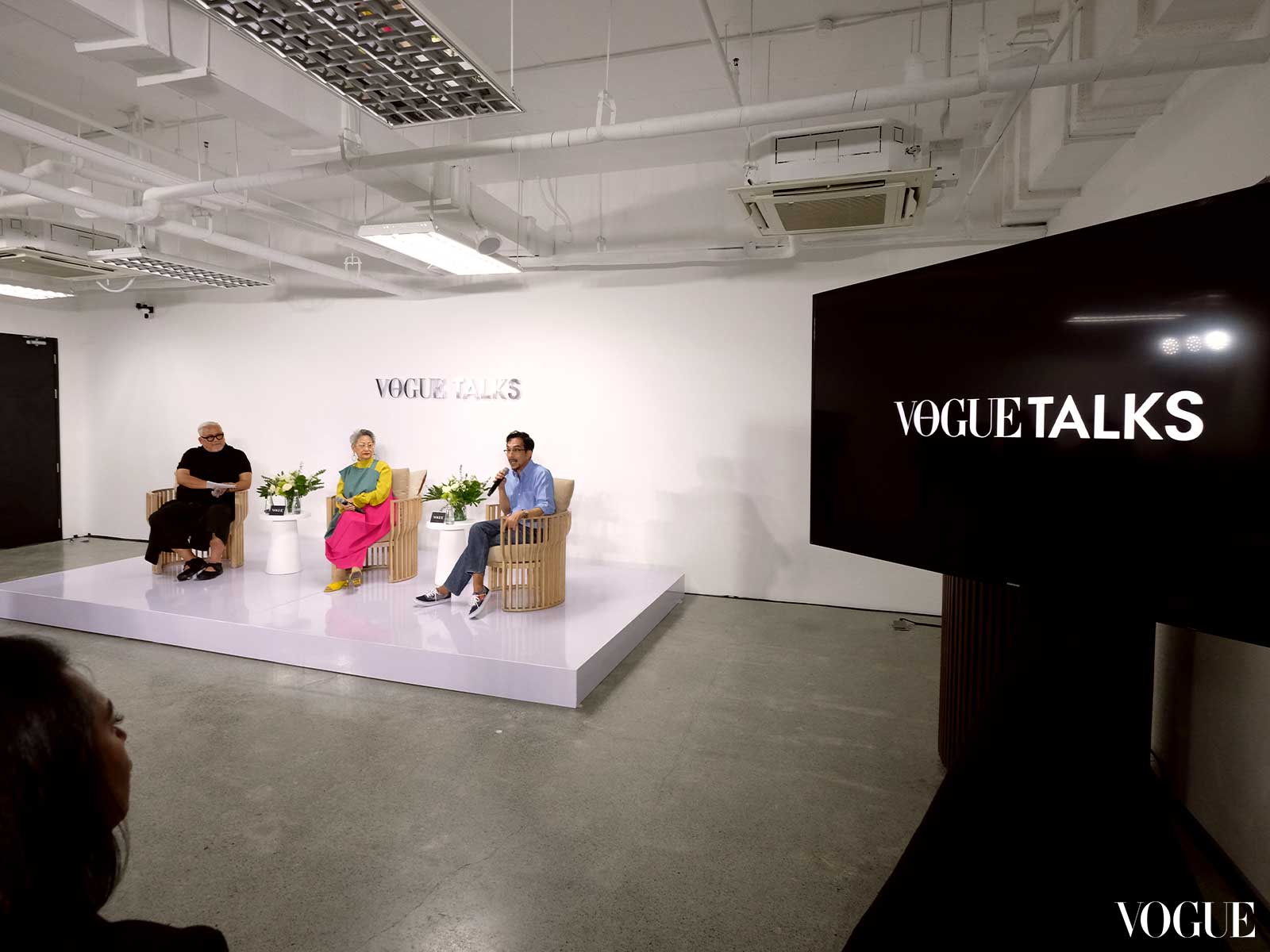
Reflecting on the talk, artist Gianne Encarnacion resonates with the concept of identity being constantly constructed. “It’s a freeing idea that your identity can be constructed over time and that you’re not tied down to a single, binary understanding of identity,” she says.
For Rajo, his work as a designer cannot be separated from being a Filipino. From the materials to the people he dresses, Rajo shares with Vogue Philippines that everything he makes is “Filipino.” “I work in the Philippines; I am a Filipino, and I primarily work with Filipinos. All the layers are Filipino. It’s built into that dialogue,” he says. Going back to the first question of what makes a design “Filipino,” this could be another answer. As the Filipino identity continues to be crafted, perhaps what also makes designs “Filipino” is the fact that we are Filipino.
- Vogue Talks: Creative Discoveries and Handcrafted Legacies with John-Paul Pietrus and Suzette Ayson
- Vogue Talks: BAYO’s Anna Lagon and Carlo Chen-Delantar on How Fashion Can Move Forward
- Vogue Talks: How Melissa Levy Crafts New Visions
- Vogue Talks: Marian Pastor Roces Challenges What You Know About Filipino History
